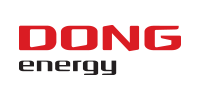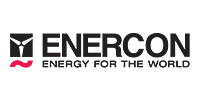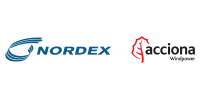Delegates are invited to meet and discuss with the poster presenters during the poster presentation sessions between 10:30-11:30 on Thursday, 29 September 2016.
Presenter

Co-authors:
Axel Dombrowski (1) F Andreas Bockstedte (1)
(1) DNV GL -Energy, Hamburg, Germany
Presenter's biography
Biographies are supplied directly by presenters at WindEurope Summit 2016 and are published here uneditedAxel Dombrowski was appointed April 2015 as Director and Head of Department for Mechanical Engineering for DNV GL - Energy, Renewables Certification with close to 200 persons in Hamburg and Copenhagen. He holds a diploma in Mechanical Engineering from Technical University of Braunschweig, Germany.
Axel and his team of 50 experts across the globe deliver certification services in renewables. Their expertise spans onshore and offshore wind power, solar and conventional generation.
He has holding various technical and management positions as expert, project and certification body manager.
Axel has been a key developer of several standards in mechanical engineering, component certifications and manufacturing evaluation.
Abstract
Simplify the complexity of your drive train by certification - saving cost and generate added value
Introduction
Complexity and integration of technical systems like wind turbines have increased over the past three decades. Standards, e.g. GL Guidelines of 1993, 2003, 2010 or IEC 61400-4, follow and support this development since the beginning of the modern wind industry. There are no signs that we have reached the end of the story yet. Moreover, the pace of change seems to increase for both, on- and for offshore applications.
Especially in this context, standardization and certification do not only result delivering a certificate which helps for government agencies, banks and insurers, but also help to break up the complexity. Manufacturer processes from the design, through the manufacturing and the supply chain until commissioning can be optimized effectively. It is our experience from the exchange between certification body and designer that well-executed certification can reduce time and money.
Approach
Main body of abstract
There is a challenge of keeping the pace with these developments. Besides confirming product quality by a certificate, risks can be identified at an early stage, improving the marketability and achieving confidence in long-term performance.
To meet all these challenges on the whole complexity of a drive train, a holistic view is essential. Of course, the main objective of new standards like DNV GL’s standard DNVGL-ST-0361 "Machinery for wind turbines" is to provide principles, technical requirements and guidance for design and manufacturing of machinery components. These shall be applicable for wind turbines onshore and offshore. But that is just the beginning. Moreover this DNV GL standard will cover the technical requirements to be applied for the DNV GL certification schemes and it is also intended to cover the requirements implied when using IEC 61400-22 related certification schemes. The risk based analysis allows reducing requirements for the designer while maintaining the safety level and reliability of the design. In addition, requirements for partial safety factors of gearboxes between former GL Guideline and IEC 61400-4 have been aligned. Thus, it is easy to switch between the two most important worldwide standards for machinery of wind turbines.
Conclusion
This presentation illustrates how standardization according to the recently updated DNV GL standard DNVGL-ST-0361 "Machinery for wind turbines" can influence the development of a complex system such as a drivetrain positively. It will also provide examples of how cost reduction and added value can be generated with some special examples from the field.
Learning objectives





Follow EWEA on: